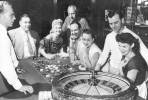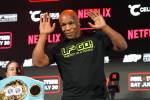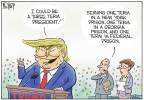State Obamacare plans youth campaign

Enrollment through Nevada Health Link might be over for now, but officials with the state’s health insurance exchange haven’t stopped thinking about how to improve sign-ups this fall.
Exchange officials want to at least double the 38,000 enrollees who bought in the first enrollment period. So the exchange is doing what any organization does when it wants more business: Prepping an advertising blitz.
To that end, the exchange had local research firm Applied Analysis ask potential customers how well its first marketing campaign went. Applied Analysis Principal Jeremy Aguero delivered the results at the exchange’s July 10 board meeting.
“This is really a scoreboard for how our advertising moved the needle of awareness in Nevada. We wanted to know what types of ads worked and what groups we reached,” exchange spokesman CJ Bawden said. “We’ll use this information to refine the next advertising campaign and make sure we hit our metrics.”
Here are some of the details that will shape the exchange’s next marketing initiative, which kicks off this fall:
The initial campaign definitely delivered on its mission to build brand awareness, Bawden said. Before the media onslaught kicked off in July 2013, less than 11 percent of Nevadans even knew the state had a website where they could buy health insurance that would comply with Affordable Care Act mandates and qualify them for federal premium subsidies, Bawden said. After the campaign, more than half named Nevada Health Link, unaided.
But the exchange still has work to do among key constituencies.
Hispanics, 31.6 percent of the general population, make up 64.3 percent of the uninsured, and 66.9 percent of uninsured Nevadans ages 18 to 33 — the age group tagged as “young invincibles.” Yet, Hispanics are just 18 percent of Nevada Health Link’s 38,000 enrollees.
Also, among all young invincibles, 87 percent say they don’t believe they could afford coverage available through Nevada Health Link. Asked what monthly premium would be affordable for them, more than 75 percent of adults 18 to 33 said $100 a month or less.
Complicating things for Nevada Health Link is that it has no control over the designs or costs of the coverage it promotes, Bawden said.
But there’s some hope in the numbers.
More than half of uninsured young invincibles said they believed they might be eligible for federal programs — such as the advance premium tax credit — that cut premium costs. And 87.7 percent said they would be likely to enroll in an exchange-based plan.
So adults 18 to 33 can expect to be heavily targeted in the exchange’s next campaign. Just 40.5 percent of young invincibles surveyed said Nevada has a website where they could buy insurance, compared with 54 percent of the general population. Bawden said one goal is to bring uninsured people ages 18 to 33 in line with the general public’s awareness level and get them to sign up.
That will mean more digital marketing, fewer billboards and bus-shelter spots.
“Billboards are not a way to deliver a very complex message. They’re more for awareness,” Bawden said.
Digital initiatives will include banner ads targeted to consumers searching online for health insurance, as well as ad buys through YouTube and Internet radio service Pandora. The exchange’s click-through rates — the number of times viewers use a link to visit the website — was 14 times the industry average on YouTube and Pandora during the first campaign.
Still, some old-media mainstays will be employed. TV spots remain valuable in urban markets, while print advertising is important in rural areas, he said.
As for that established image? It cuts both ways. It’s great for Nevada Health Link that people have heard of it, but some of that name recognition comes from media coverage of the botched rollout that signed up just a third of the expected 118,000 enrollees.
Also, with the exchange dropping website contractor Xerox and borrowing the federal healthcare.gov’s eligibility and enrollment functions for the next enrollment session, consumers need to know they will have to re-enroll, although it’ll be through a better-functioning system, Bawden said.
So part of the campaign will be dedicated to ensuring people know it’s OK to buy through Nevada Health Link.
“You’re going to see some messaging on the changes that have gone on, trying to instill in Nevadans who sat on the sidelines because they heard about some issues that it’s different. Come back. We’re putting together a system that works for all Nevadans,” Bawden said.
There’s one other key difference in the campaign: Its price.
The 2013 initiative cost $7 million, while the new one will run $3.4 million, in part because Nevada Health Link has suitable name recognition. But it’s also because the enrollment period is shorter, running from Nov. 15 to Feb. 15, rather than from Oct. 1 to May 30, as it did in the first sign-up period.
Expect to see the exchange’s first messages right after November’s midterm elections, when political ads leave the airwaves and open space for new spots.
Contact Jennifer Robison at jrobison@reviewjournal.com or 702-380-4512. Find her on Twitter: @J_Robison1.


















